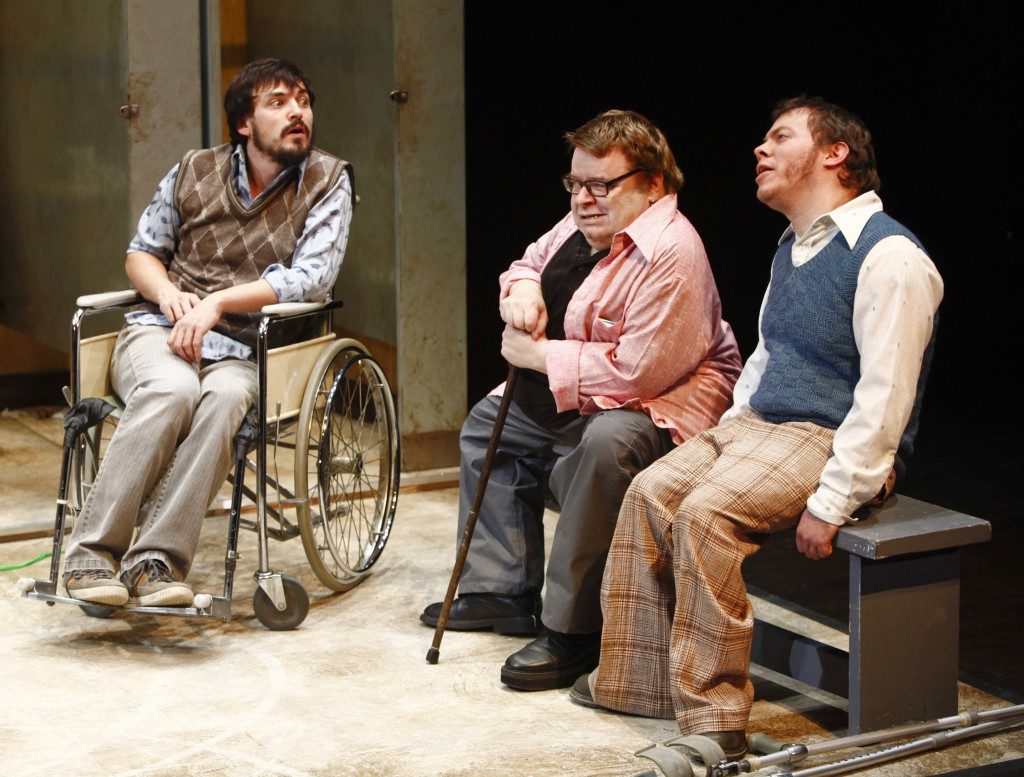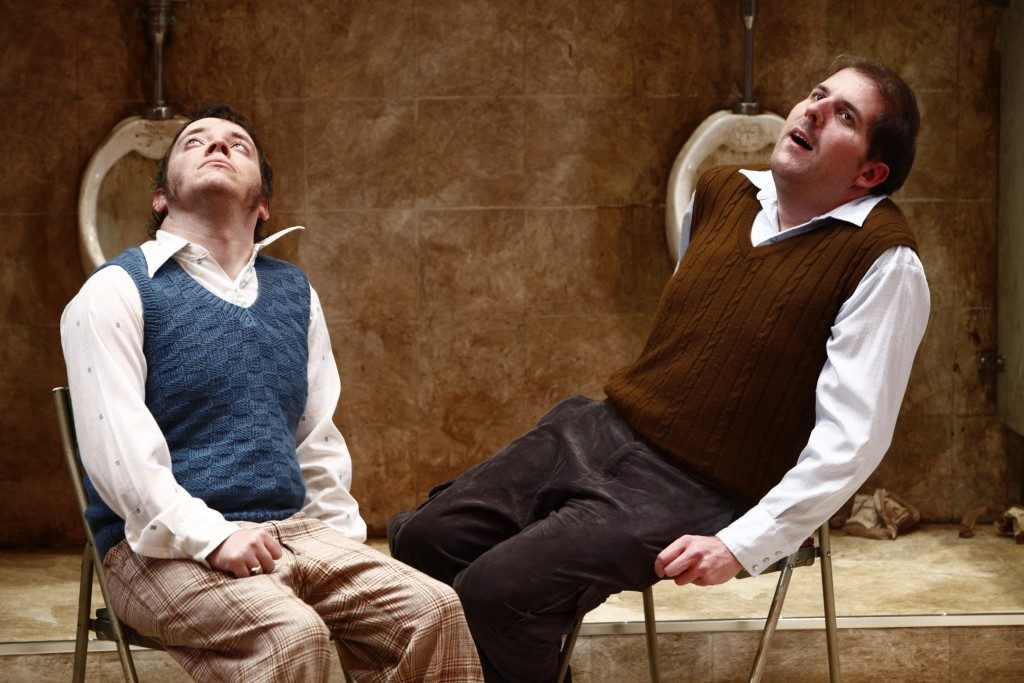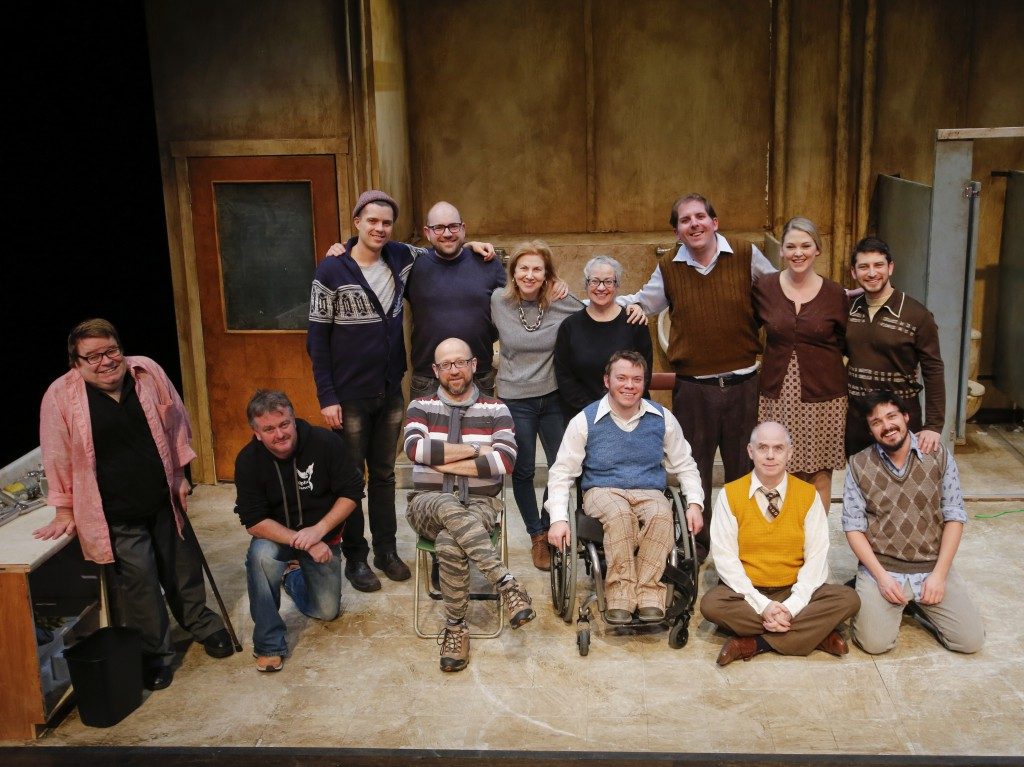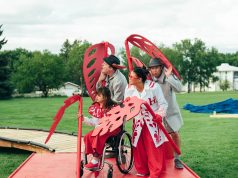
I first encountered CREEPS in the fall of 2004, during my last year at Memorial University in Newfoundland. One of my fellow theatre nerds (I think it was Clint Butler) flat out told me to read it.
“It’s amazing,” he said. “I think you’ll get a lot.”
He was right.
For the handful of Canadian theatre-makers who may not know the show, CREEPS follows five men “employed” in the sheltered workshops of 1970s Toronto. Men with Cerebral Palsy. Like me. More than that, when it premiered at Tarragon in 1971, CREEPS was held up as groundbreaking theatre that drew its depiction of life with disability from the playwright’s own lived experience.
From CREEPS, I grew my first impressions of the power of bodies like mine on stage. And there was David Freeman, shaking foundations with his first play – an unflinching picture of his desire to do more with his life than the few simple things for which society thought he might be fit. And there was I, an aspiring theatre-maker who also happened to have CP, reading Freeman’s words and nodding my head hard enough to give myself whiplash.
There, in the fall of 2004, CREEPS resonated with me in ways I’d never felt before. That’s the goal, I thought. Resonance. By the time I discovered the play, it was already 33 years old. But, to me, that made sense because the best stories don’t just resonate. They resonate across time. Right?
Cut to 2016. I’d left Newfoundland for Vancouver and been living here for nine years, slowly compiling a body of work in theatre, film, writing, and dance. Then, in the fall of that year, the fine folks at Vancouver’s Realwheels Theatre asked me to audition for their upcoming production of… you guessed it… CREEPS.
“Yes!” I said. “Of course! Absolutely!”
“Fantastic!” they said. “We’ll send you the script.”
I reread it. Where I’d once seen righteous indignation, I now heard whining. Where there had been the rare voices of characters I could’ve sat down to share stories with, there were now gobs of thinly-veiled victim dialogue from Tom, Jim, Sam, and Pete, characters I found almost as interchangeable as their names. What had happened?
The short answer: a lot. In 2004, I’d snap-neck nodded at every other line. So much so that, when I finished reading CREEPS for the umpteenth time, I resolved to look more closely at the ways I felt trapped and hidden, and set about changing things. In 2016, having established myself on the other side of the country and achieved some modest success – most of which had nothing to do with my expression of the capital-D-capital-E Disability Experience – I think part of me was oddly surprised to find Tom and company right where I’d left them. CREEPS, I realized, wasn’t meant to resonate across time. The Realwheels production would be a measurement of how much things had changed since 1971.
How much was that exactly? In the 45-year history of the play, this production was billed as the first to feature a fully integrated cast of professional actors with and without disabilities. For me, that was equal parts exciting, surprising, and disappointing. Compounded with the fact that neither the show’s director, Brian Cochrane, nor Realwheels’ Managing AD, Rena Cohen identify as having disabilities, the production equation gave me pause.

I wondered who exactly this play was still resonating with: those with lived experience of disability, or those outside that experience, trying to get a look in? And if they got a look in, what would they see in such an old picture? In the end, would the audiences applaud the work as a whole, or the “inspiring” efforts of an integrated cast? And if the latter, wouldn’t that just reflect some of the very same power dynamics that were present in the workshops themselves? Even if the applause came for both the work and the “inspiration”, I wasn’t sure that would be enough for me.
Still, I auditioned. Partly out of respect for what the play had meant to me, and partly because I wanted to believe my misgivings were misplaced. I couldn’t poll the whole of each audience, but to my infinite gratitude, and their infinite credit, I didn’t need to worry about Rena and Brian. They understood their positions in the wider politics of the play. And on the occasions when they were uncertain, they stepped up and approached those with lived experience for the clarification they needed.
Which is more than I can say for myself, at least at the outset of rehearsal. There were three actors with disabilities in the production, but I was the only one with Cerebral Palsy. So, when I was eventually cast as Jim Harris, I figured at least that degree of authentic physicality was good to go.
Then I met Jeanne Morton, A consultant on the show, Jeanne had staffed in the sheltered workshop system. When Jeanne watched me as Jim, she said that maybe I should try increasing my level of spasticity. Maybe I should experiment with what folks with the condition sometimes call the “CP accent”. In essence, Jeanne was suggesting that I appear more disabled than I am.
I resisted at first. Who was this woman to tell me that I was doing Cerebral Palsy wrong? Then she explained that almost all of the people in the workshops had had more severe manifestations than mine. They experienced communication difficulties; their levels of spasticity were much higher. In short, someone like me, as I am, would probably never have been in the workshops in the first place.
As a person with Cerebral Palsy, I felt the resonance again; this time on a different frequency. In 2004, I’d seen CREEPS as a reflection of my own lived reality. In 2016, by the light of the choices I’d made and the opportunities I’d had, Jim Harris – and the play as a whole – had become a reminder of the privilege, ability, and uncommon luck that had kept me blissfully ignorant of what the sheltered workshops had meant to their occupants, and to society, just one short decade before I was born.
As an artist I knew that, for a work explicitly created to reflect the lived experience of a particular population, 45 years is too long to wait for members of that population to appear in the work. That length of time spoke to a much bigger problem of access and opportunity, and helped me understand just how much of an outlier my education, my training, and even my luck had made me. Thanks to CREEPS, I recognized that my opportunities leave me with the means to create opportunities for others. People who want to do the work I do, but haven’t been given the chance.
I need to be clear: performing in CREEPS was an honour, but after it closed I felt the satisfying responsibility to find, represent, and help in the making of newer, better work. Now, I find myself working with an increasingly large national community of artists, including Realwheels Theatre, toward a time when CREEPS might be produced again – with a fully integrated cast of actors with and without disabilities. If and when that happens, I’d like to help make sure we’ve moved on to a place where it’s no big deal. Where, if the work resonates, it will resonate for the right reasons in its own right time.

Lauchlin Johnston, Rena Cohen, Ingrid Turk, Aaron Roderick, Genevieve Fleming, David Kaye









